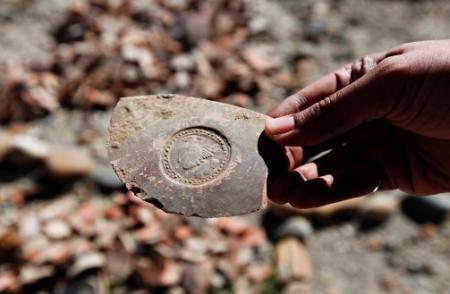New course sheds light on antiquities trafficking and art crime underworld
Published: 19 January 2016
A free online course, starting on 1 February, draws from archaeology, criminology, art history and law to offer a glimpse into the underworld of illegal art and antiquities trafficking.
You've just stolen one of the most famous paintings in the world – what's your next move? Who buys the Mona Lisa or The Scream? In Antiquities Trafficking and Art Crime, a free online course developed by the Trafficking Culture project and the University of Glasgow, you'll be able to weigh your options... and there aren't many of them.
Antiquities Trafficking and Art Crime starts on 1 February, is open to anyone, and is available for free on the Open University's online learning platform FutureLearn: https://www.futurelearn.com/courses/art-crime/
Drawing from archaeology, criminology, art history and law, Antiquities Trafficking and Art Crime will cover cover cutting-edge research into art's seedy underworld. Structured as a series of exciting case studies, this course will ask big questions such as: Who owns the past? Who owns art? How can we protect our culture from theft and destruction?
"This is a stimulating opportunity to explore cases of art crime that make headlines around the world", says Dr Donna Yates, an expert in antiquities trafficking research at the Scottish Centre for Crime and Justice Research, who will be leading the interactive course.
"Every day we see disturbing reports about the destruction of heritage in Yemen, Libya, Iraq, or Syria. Photographs of looters holes at important archaeological sites look like lunar landscapes. Paintings disappear off the walls of museums and go through incredible journeys through the criminal underworld. And indigenous people fight for the return of their sacred objects. People always ask me what they can do to help. I say, learn more and raise awareness." The team believes that participating in Antiquities Trafficking and Art Crime is a good start.
The course stems from the work of the Trafficking Culture project which, for the past four years, has explored the criminal networks that loot, smuggle and sell antiquities from across the globe. The team’s on-the-ground work studying such topics as statue smuggling networks in Cambodia, the looting of Maya tombs in Guatemala and Belize, and how communities effectively reclaim their stolen cultural treasures in Bolivia and New Zealand, have been converted into case studies, videos and activities. These will range from a discussion on the return of the Elgin marbles to a game of “guess the fake”.
"Our goal was to make this important research accessible to everyone: absolutely anyone can take this course, no specialist knowledge is needed," says Yates. "It's a fun, sometimes wild topic, that's a reason that Hollywood loves art crime! But there is real academic research behind the hype: white-collar crime, organized crime, international smuggling... This course keeps the intrigue but mixes in the knowledge about art and antiquities crime that researchers have been developing in recent years."
More than 7000 people from around the world have already signed up to participate, ranging from university students and retired teachers to novelists, archaeologists and even a former FBI officer.
For the record, art crime usually doesn't pay. As participants in Antiquities Trafficking and Art Crime will learn, both the Mona Lisa and The Scream were recovered by the police and the thieves were arrested. They were unable to find buyers for such well-known artworks. That said, the stories of these heists reveal a lot about both the black market for art and how we value culture as a society.
For more information contact the University of Glasgow Communications and Public Affairs Office on 0141 330 3535 / media@glasgow.ac.uk
First published: 19 January 2016
<< January

